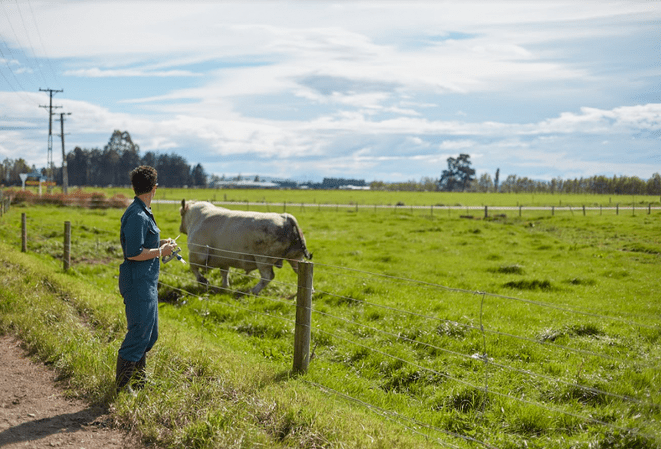Check those swimmers are swimming.
Although it may feel like calving has only just started, it’s not long until thoughts shift towards mating. Whilst it is important to ensure your cows are in good condition and have plenty of feed, it is also vital to remember the other key player in your mating success – bulls.
Bulls must be in tip-top shape in order to achieve maximum success at mating time. Condition should be on target (BCS 6-7) and they should not be suffering from any disease or illness. In addition, all bulls should meet minimum scrotal circumference targets for their age and breed prior to mating. However, there is one major aspect of a bull’s health that can’t be assessed externally – semen. How do you know if those swimmers are actually going to swim?
Every year we get calls in April after the annual herd pregnancy scan saying that there has been an unexpected high dry rate. This could be due to an outbreak of diseases such as BVD, but often is linked with a bull subfertility issue. Unfortunately, it is often too late to do anything about the problem if it was only found at scanning time, which can be very costly to your business and the genetic progress of your herd.
Semen testing is the best way to ensure good sperm health. It is best done in the months prior to mating, so any issues can be identified early and then provisions can be made for solutions if required.
When a vet comes out to do a breeding soundness exam on your bulls, they will do a physical check, including scrotal palpation, circumference measurement and penis examination, then use an electro-ejaculator to collect a semen sample. This sample is examined under a microscope for density, motility and deformities; and the bull is allocated a score according to the quality of his semen. We can give you a result (pass or fail) at the time of testing. Bulls with good quality semen and large testicles are much more likely to successfully impregnate more cows.
Bulls are quite sensitive animals, and any small disease or injury can lead them to be subfertile. Anything which raises their body temperature, even for a short time, can damage their sperm. The lifecycle of a sperm is about 60 days, so this means it can take up to 2 months for a bull to recover to full capacity after a disease or injury. If this happens on day one of mating, you could have a big problem!
Other points to remember about bulls prior to mating:
- Make sure they have all had their BVD booster vaccine at least 4 weeks before mating starts. Virgin bulls should be blood tested for BVD virus as well as vaccinated.
- Consider giving them some trace element supplementation e.g. Multimin, and an endoparasite drench before they join the herd.
- The recommended bull:cow ratio is 1:30 maximum (1:20 if using yearlings). If you are synchronising your cows, this ratio may need to be much higher.
- Remember to watch your bulls in the herd and make sure they are doing their job properly.
- Have some spare bulls on-farm to swap out if one becomes lame or injured.
- Treat injured bulls as promptly as possible. Allow them plenty of time to rest and recover.
- Christine Utting

